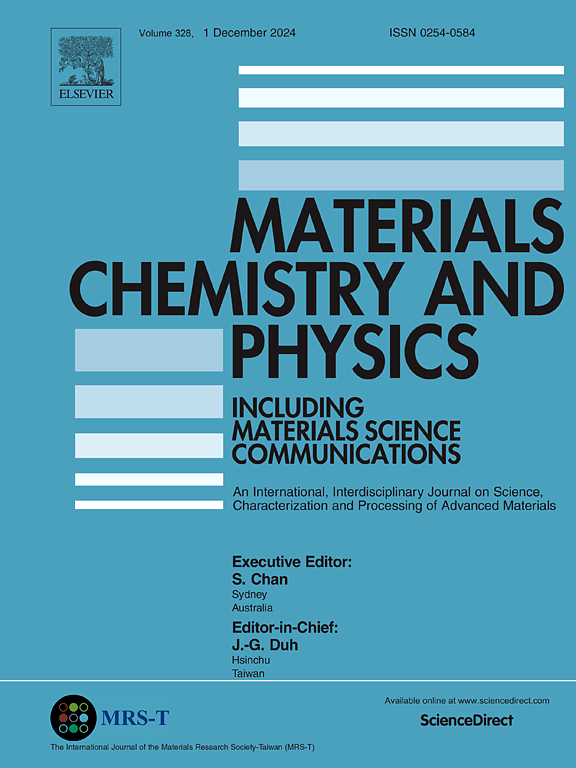大豆蜡涂层电石渣复合材料增强水泥基材料微膨胀变形的研究
IF 4.7
3区 材料科学
Q2 MATERIALS SCIENCE, MULTIDISCIPLINARY
引用次数: 0
摘要
工业固体废弃物电石渣(CS)的主要成分是氢氧化钙(Ca(OH)2),煅烧后生成氧化钙(CaO),可用作 CaO 型膨胀剂。然而,煅烧 CS 的水化反应往往发生在水泥凝结硬化时间之前,所产生的膨胀效果不佳,这限制了 CS 作为 CaO 膨胀剂的广泛应用。本研究利用大豆蜡(SW)包覆煅烧 CS 以延缓其水化反应,制备了一种新型膨胀剂--大豆蜡包覆 CS 复合材料(CSCC)。本研究对 CSCC 的微观结构组成进行了研究,并分析了不同混合比的 CSCC 的水化历程和延缓特性及效果。还研究了 CSCC 水泥基材料的微膨胀变形和强度发展,并建立了微膨胀模型。结果表明,包裹在 CS 颗粒表面的 SW 形成了致密的包裹结构,有效地延缓了水化。同时,与 CS 相比,由于 SW 的包裹,CSCC 在水化过程中存在一个诱导期,大大延迟了 CS 的水化。此外,通过分析延迟水化开始时间和第二个放热速率峰的时间,确定了 CSCC 的最佳混合比。研究还发现,掺入 CSCC 会显著增加胶凝材料的微膨胀变形,但会降低抗压强度。本文章由计算机程序翻译,如有差异,请以英文原文为准。
Study of micro-expansion deformation of cement-based materials enhanced by soybean-wax-coated carbide slag composites
The industrial solid waste carbide slag (CS) is composed mainly of calcium hydroxide (Ca(OH)2), which produces calcium oxide (CaO) after calcination and can be used as a CaO-type expansion agent. However, the hydration reaction of calcined CS often occurs before the cement setting and hardening time, and the resulting expansion is ineffective, which limits the wide application of CS as a CaO expansion agent. In this study, a new type of swelling agent, soybean-wax-coated CS composite (CSCC), was prepared by using soybean wax (SW) to coat the calcined CS to delay its hydration. In this study, the microstructural composition of CSCC was investigated, and the hydration history and retardation characteristics and effects of CSCC with various mixing ratios were analysed. The micro-expansion deformation and strength development of CSCC cement-based materials were also investigated, and a micro-expansion model was established. The results showed that SW wrapped around the surface of CS particles formed a dense wrapping structure and effectively delayed hydration. Meanwhile, compared with CS, CSCC had an induction period in the hydration process due to the coating of SW, which greatly delayed the hydration of CS. Also, the optimum mixing ratio of CSCC was determined by analysing the delayed hydration onset time and the time of the second exothermic rate peak. It was also found that incorporating CSCC resulted in a significant increase in the micro-expansion deformation of the cementitious materials but a decrease in the compressive strength.
求助全文
通过发布文献求助,成功后即可免费获取论文全文。
去求助
来源期刊

Materials Chemistry and Physics
工程技术-材料科学:综合
CiteScore
8.70
自引率
4.30%
发文量
1515
审稿时长
69 days
期刊介绍:
Materials Chemistry and Physics is devoted to short communications, full-length research papers and feature articles on interrelationships among structure, properties, processing and performance of materials. The Editors welcome manuscripts on thin films, surface and interface science, materials degradation and reliability, metallurgy, semiconductors and optoelectronic materials, fine ceramics, magnetics, superconductors, specialty polymers, nano-materials and composite materials.
 求助内容:
求助内容: 应助结果提醒方式:
应助结果提醒方式:


